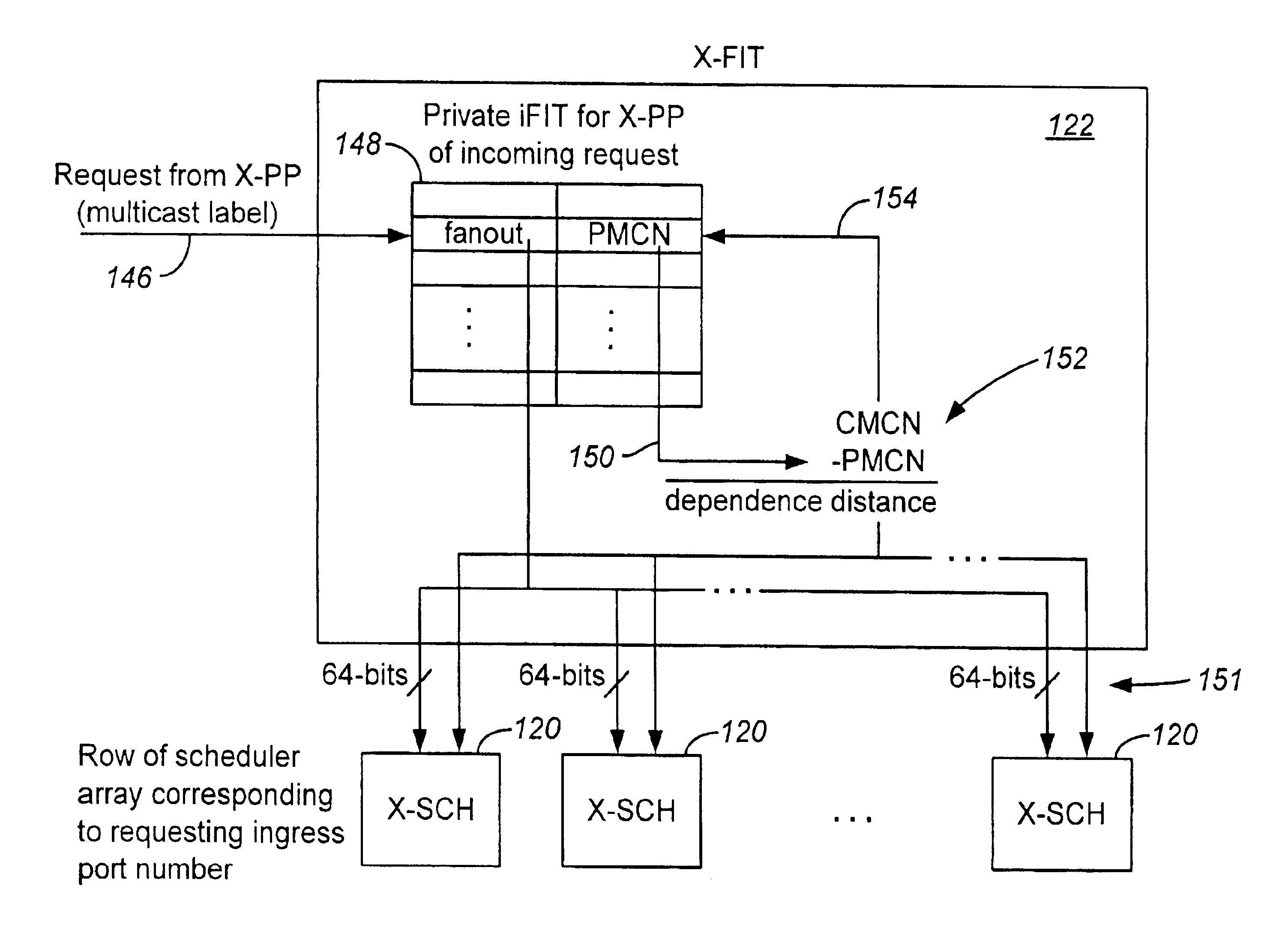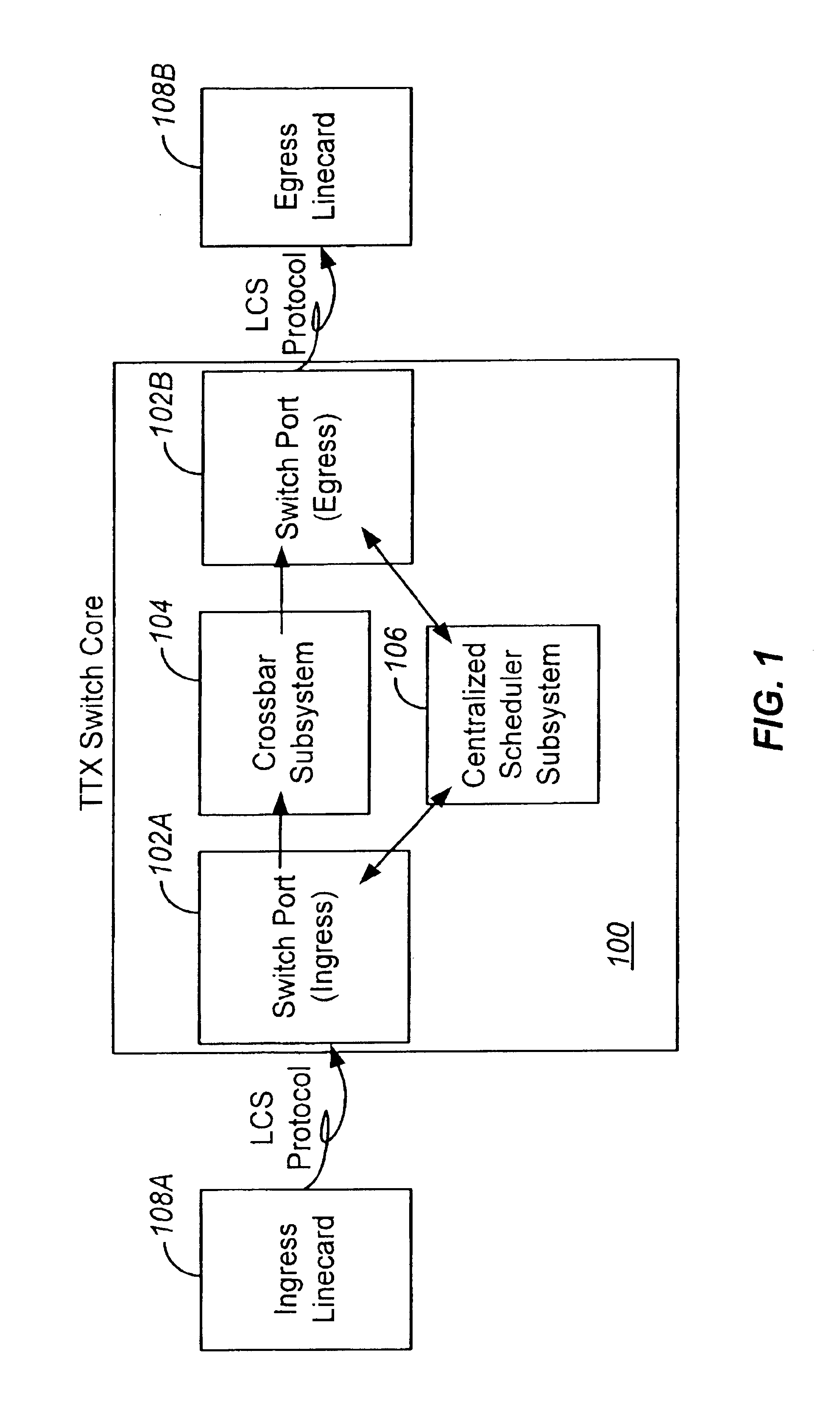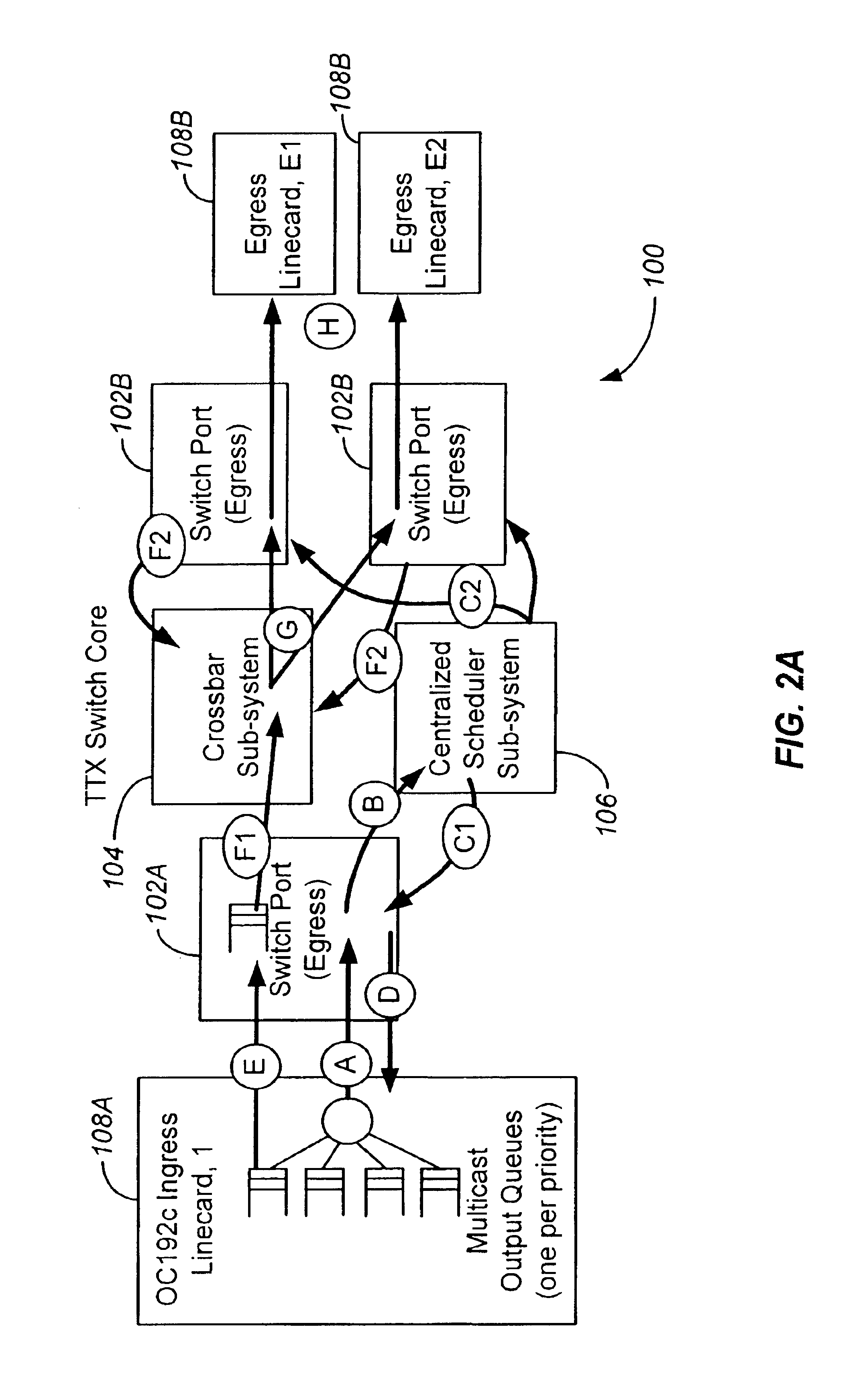Multicast cell scheduling protocol
a multicast cell and scheduling protocol technology, applied in the field of data handling systems, can solve the problems of difficult multicast data cell transmission, and difficult to solve the problem of simple allocation problem
- Summary
- Abstract
- Description
- Claims
- Application Information
AI Technical Summary
Benefits of technology
Problems solved by technology
Method used
Image
Examples
Embodiment Construction
FIG. 1 is a block diagram depicting logical interconnects of a base crossbar-based switch core 100 in accordance with the present invention. The switch core 100, for the purpose of describing the preferred embodiment, includes three types of devices: ports 102A, 102B, crossbar subsystem 104 and centralized scheduler subsystem 106.
Ingress port 102A and egress port 102B are respectively coupled to an ingress linecard 108A and egress linecard 108B, each of linecards 108A, 108B being outside the switch core 100. In a preferred embodiment, the ports 102 include shallow queues and implement a linecard-to-switch (LCS) protocol. Note that, with reference to FIG. 1, ports 102A, 102B are depicted as and may comprise separate instruments; in the preferred embodiment of the present invention, however, ports 102A, 102B comprise an integrated instrument.
The ports 102 may have shallow (e.g., 64 cell) queues in both ingress and egress directions. These queues may compensate for the latency between ...
PUM
 Login to View More
Login to View More Abstract
Description
Claims
Application Information
 Login to View More
Login to View More - R&D
- Intellectual Property
- Life Sciences
- Materials
- Tech Scout
- Unparalleled Data Quality
- Higher Quality Content
- 60% Fewer Hallucinations
Browse by: Latest US Patents, China's latest patents, Technical Efficacy Thesaurus, Application Domain, Technology Topic, Popular Technical Reports.
© 2025 PatSnap. All rights reserved.Legal|Privacy policy|Modern Slavery Act Transparency Statement|Sitemap|About US| Contact US: help@patsnap.com



